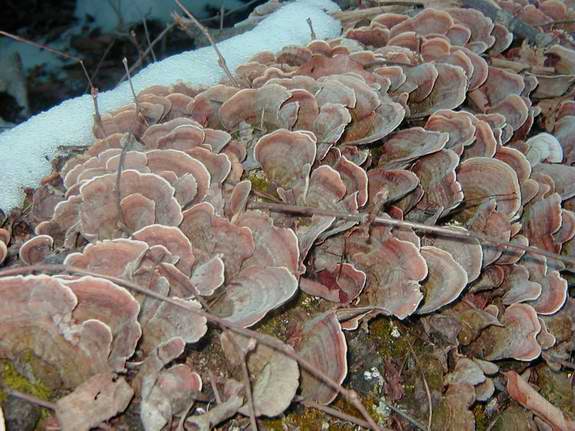|
Common
Name: Turkey Tail, Yun Zhi,
Kawaratake Scientific Name: Trametes versicolor (Trametes means "flesh" or "fabric" and refers to the fact that the connective tissue [hyphae] project through the cap to the walls of the pore tube, giving the fungus a fibrous consistency, versicolor means multicolored) Turkey tail is common bracket fungus that grows on dead deciduous trees in overlapping, leathery semicircular caps. It is characterized by concentric colored bands that may include brown, auburn, green, blue, and yellow segments. The name derives from the rather obvious fact that it resembles a turkey's tail. Potpourri: Trametes versicolor hyphae (the individual strands that make up the vegetative portion of the fungus called the mycelium) are 10-40 percent protein and 30-35 percent polysaccharides. Protein bound polysaccharide (PSK); known commercially as Krestin, is an approved anti-cancer drug in Asia, responsible for several hundred million dollars in sales annually. The medicinal properties of this fungus are anti-tumor and in the stimulation of the body's immune system killer cells. Clinical studies have demonstrated the efficacy of compounds derived from Trametes versicolor in the treatment of leukemia and cervical cancer. It has been used to treat a variety of cancers, including breast, lung and colon. Turkey tail is a very efficient decomposer of wood, recycling the nutrients and minerals back into the ecosystem. The hyphae grow through the wood and secrete laccases which are enzymes that depolymerize the dark lignin that holds the light colored cellulose together. This "white rot" is under study as a means of biopulping, and environmentally friendly alternative to bleaching used in the manufacture of paper. |
